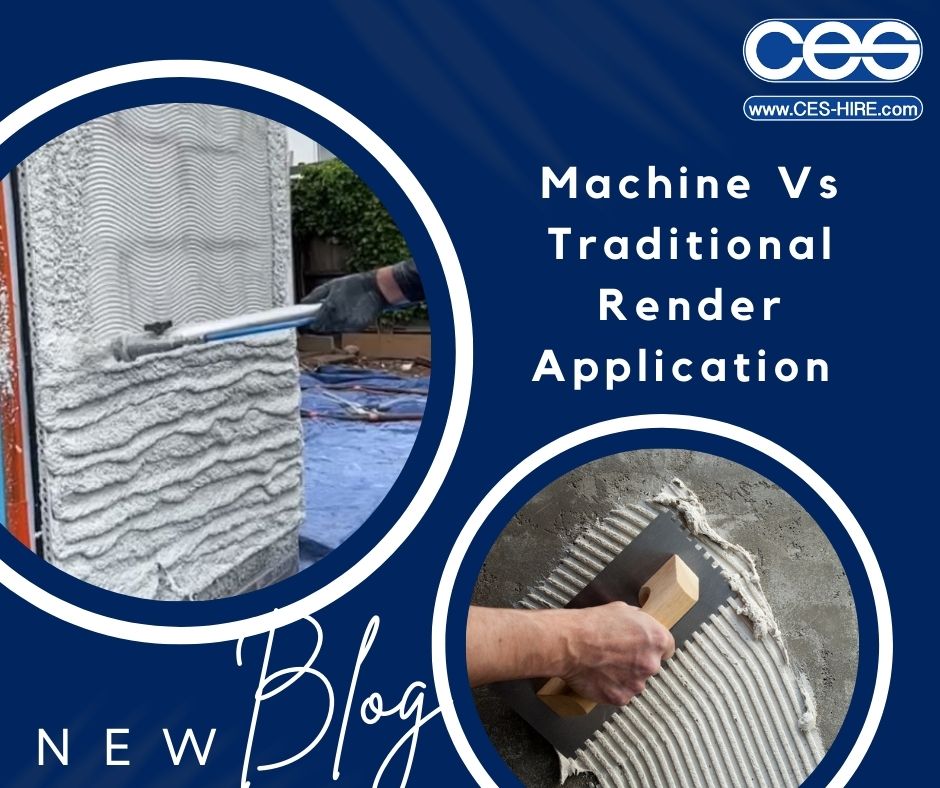Rendering is a relatively simple way to create a dramatic transformation of your home. Traditional render in some form has been around for centuries. Just like clothing is worn to aesthetically enhance and protect (certainly needs to in a wet/cold British winter or indeed Summer), render does the same. Ultimately render is often chosen for its striking appearance, however it also has very practical benefits of weather protection and energy efficiency (read more about the benefits here>). People are most familiar with traditional hawk and trowel rendering although machine spray render application is becoming increasingly common.
What are the benefits of Traditional Hand-applied render?
The method of hand-applying render has been around for centuries so naturally people will often lean towards what is known and has stood the test of time. Traditional render application takes skill and some people look at the notion of man vs machine and would put their trust in man. With manual application one could say that you can apply more accurately particularly in hard-to-reach areas such as eaves or intricate wall features. You may also consider that less can go wrong with a simple hawk and trowel application and perhaps there is less chance of smattering areas with render that shouldn’t be such as guttering, windows etc. There is also the fact that you need a simple and relatively cheap set of tools compared to hiring or buying a machine (take a look at CES’s top tools for render application here>). For a small area of render hand application may have its upsides since you perhaps do not want to set up and run your machine for the smallest surface.
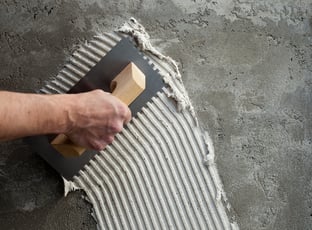
What are the disadvantages?
One of the big drawbacks is time. It is much slower to apply by hand and add in the fact that you will have to apply several coats with drying time in between (with machine applied monocouche you can apply just a single layer). There is the extra pressure to get your application done within a day so as not to compromise the finish for even drying/colouring. Whilst you may save time on the cost of tools, there will certainly be added labour and time implications which can end up putting machine and hand application on a level playing field cost wise. Finally, the biggest problem is the toll manual labour can take on your body; it really is back-breaking work and don’t forget, serious back injuries could put you out of work for months and then you certainly won’t be thinking about the money you “saved” by not investing in a machine.
What are the benefits of machine application?
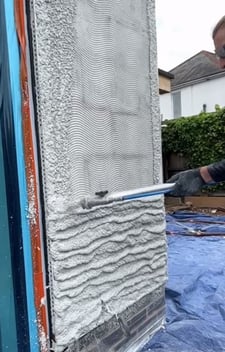 One of the reasons we promote the benefits of machine application is for your health and wellbeing. We know that being in the construction industry is tough on your body so anything we can do to reduce the strain is a win. Remember health is wealth and with retirement ages creeping up, getting your body in good working order and under less physical stress with keep your working longer (much as that early retirement does sound appealing!) The other huge advantage is the time and the phrase time is money has never been so apt (particularly key in the construction industry). Machines come into their own on large projects and big-scale new build sites as they can complete the rendering process in a fraction of the time allowing for other trades to move in and complete their tasks. Monocouche (one-coat) render is also incredibly popular as it requires that single coat and far less curing time that the multiple layers of hand-applied render (find out more about the benefits of Monocouche here>). Levels of productivity increase dramatically with machine application; you will find you can complete far more jobs over a year than with traditional hand-application. Surprisingly, pressurised spray guns can achieve a high degree of accuracy and can accomplish a uniform/level finish far easy than by hand. (machine render images courtesy of CES customer H T Plastering; specialists in plastering, rendering and drylining)
One of the reasons we promote the benefits of machine application is for your health and wellbeing. We know that being in the construction industry is tough on your body so anything we can do to reduce the strain is a win. Remember health is wealth and with retirement ages creeping up, getting your body in good working order and under less physical stress with keep your working longer (much as that early retirement does sound appealing!) The other huge advantage is the time and the phrase time is money has never been so apt (particularly key in the construction industry). Machines come into their own on large projects and big-scale new build sites as they can complete the rendering process in a fraction of the time allowing for other trades to move in and complete their tasks. Monocouche (one-coat) render is also incredibly popular as it requires that single coat and far less curing time that the multiple layers of hand-applied render (find out more about the benefits of Monocouche here>). Levels of productivity increase dramatically with machine application; you will find you can complete far more jobs over a year than with traditional hand-application. Surprisingly, pressurised spray guns can achieve a high degree of accuracy and can accomplish a uniform/level finish far easy than by hand. (machine render images courtesy of CES customer H T Plastering; specialists in plastering, rendering and drylining)
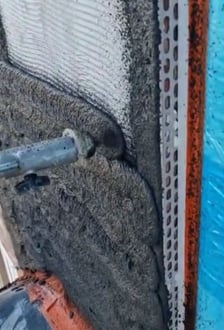
Are there any downsides?
The initial outlay of investing in a machine may put you off. However, buying a machine is an investment you will see a return on. The amount of jobs and the size of projects you will be able to complete will increase, certainly paying you back on the original cost. Don’t forget there are other options such as hiring machines or buying second hand. There are also always a variety of machines at different price points to suit your company. Of course, if you are hiring, you will need to plan ahead in order to get booked in since in the render-season popular machines may not always be immediately available. With owning a machine, you’ll also need to consider secure storage as well as planning in to maintenance costs.
Machines and Tools at CES Hire
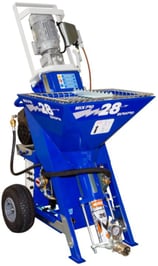 CES offer rendering supplies for both hand and machine application. You’ll find all the specialist tools you will need such as hawks, trowels, spatulas and rules as well as a variety of consumables to aid preparation and clean up like tapes, polyethenes and drop films. Take a look at the tools we recommend here >. When it comes to machines, we hire and sell big diesel machines for large-scale projects as well as smaller more portable electric options. Why not take a closer look at the Euromair XPro D80 or the Euromair MixPro 28.
CES offer rendering supplies for both hand and machine application. You’ll find all the specialist tools you will need such as hawks, trowels, spatulas and rules as well as a variety of consumables to aid preparation and clean up like tapes, polyethenes and drop films. Take a look at the tools we recommend here >. When it comes to machines, we hire and sell big diesel machines for large-scale projects as well as smaller more portable electric options. Why not take a closer look at the Euromair XPro D80 or the Euromair MixPro 28.

